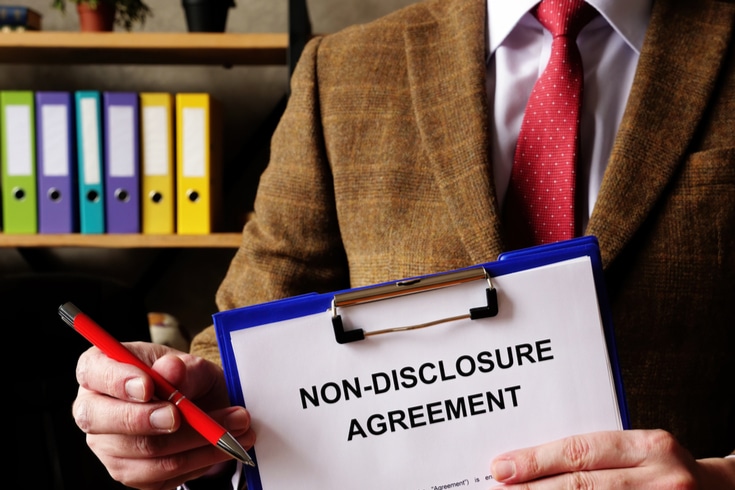What are the Impacts of Litigation on Public Listing Reviews?

Many IT and venture companies may be considering going public (Initial Public Offering, IPO) in the future. The listing examination is conducted in accordance with the listing standards set by the stock exchange.
However, the published listing standards are described in abstract terms, making it difficult to understand what exactly is being examined.
As a company aiming for an IPO, you would want to avoid any issues during the examination as much as possible. Therefore, even in situations where it may be appropriate to make claims for damages against business partners and others, there may be hesitation to initiate litigation until the listing is approved.
Therefore, this article will explain the potential impact of initiating litigation on the listing examination for companies preparing to go public.
What is a Listing Examination?
Since most companies have never experienced a listing examination, it may be difficult to imagine the process. Therefore, we will outline the flow of a listing examination.
Flow of the Listing Examination
A listing examination is a review conducted when a company lists its shares on a public market. There are two types of listing examinations:
- ‘Underwriting Examination’ by the lead underwriting securities company
- ‘Public Examination’ by the securities exchange where the listing application is made
When a company goes public (IPO), securities companies assist with the listing application process. Such securities companies are called ‘underwriting securities companies’.
It is common for multiple underwriting securities companies to be involved in a listing application. Among these, the securities company that plays a central role in the listing application is called the ‘lead underwriting securities company’.
For companies preparing to go public, the lead underwriting securities company first examines whether they meet the listing examination criteria set by the exchange.
After that, the company applies for listing, and the securities exchange conducts a listing examination. This is a two-step process.
Contents of the Listing Examination Criteria

The listing examination criteria are divided into formal requirements and substantive requirements, with detailed examination items set within each.
- ‘Formal Requirements’ include the number of shareholders, circulating shares, years of business continuity, unit shares, types of stock certificates, restrictions on stock transfers, etc.
- ‘Substantive Requirements’ include the appropriateness of disclosure of company content and risk information, the soundness of corporate management, the effectiveness of corporate governance and internal control systems, the rationality of business plans, etc.
Note that the listing examination criteria are set by each securities exchange where the listing application is made. The listing examination criteria for Mothers and JASDAQ, where many IT venture companies go public, are set lower than those for Tokyo Stock Exchange Prime and Second Section.
However, whether a company can actually pass the listing examination may be influenced by the trends in the stock market at the time of the listing application.
Both Mothers and JASDAQ are currently operated by the Tokyo Stock Exchange. Both are markets centered on growth companies such as venture companies, and are also called emerging markets.
JASDAQ is divided into the Standard Market and the Growth Market. The Standard Market, which requires a certain level of performance and track record, is said to have a more difficult listing examination than Mothers.
On the other hand, the JASDAQ Growth Market is a market aimed at making it easier for growth companies with innovative technologies and business models to go public.
Therefore, if a business has unique features and potential, it can maintain its listing even if it is running at a loss.
Disclosure of Information in the Listing Examination
As mentioned earlier, the appropriateness of disclosure of company content and risk information is examined in the listing examination.
In fact, when applying for listing, the company needs to create and submit disclosure documents such as securities registration statements. Once these documents are submitted, they become viewable by an unspecified number of people on the Internet.
If a company applying for listing is involved in a lawsuit, it must describe the details in the securities registration statement.
The Impact of Litigation on Public Listing Examination
Whether litigation has a negative impact on the public listing examination depends on the circumstances that led to the lawsuit.
In the following, we will explain separately for cases where your company is the claimant (plaintiff) and cases where your company is the defendant.
For a similar issue, we have detailed the impact of reputational damage on the public listing examination in the following article.
https://monolith.law/reputation/listing-examination-criteria-and-reputational-damage[ja]
When Your Company is the Claimant

When your company is the plaintiff and is making a claim against the other party, there is often no problem.
For example, if your company’s rights have been infringed and you have made a claim for injunction or damages, you may be asked to confirm the overall litigation through a questionnaire at the time of the year-end audit.
However, the usual intention of the auditing firm in confirming with the company is to check whether there are any hidden issues that could put the company in a position to receive claims for damages, etc.
Therefore, as long as the company initiates litigation, there is basically no negative impact on the public listing examination.
However, the fact that the company is conducting litigation itself is subject to information disclosure. Therefore, the company needs to disclose the contents of the lawsuit, etc. in the securities registration statement.
Also, in the public listing examination, the company will be asked to explain about the lawsuit. At that time, it is common for the company to prepare and submit an opinion letter from a lawyer.
Thus, when a company is carrying a lawsuit in which it is the plaintiff against a third party, there is a procedural burden of having to explain about the lawsuit and prepare an opinion letter during the public listing examination.
However, if the company is the claimant, as long as it can explain properly, the fact that it is conducting litigation itself will not have a negative impact on the public listing examination.
When Your Company is the Defendant
On the other hand, when your company is in the position of being the defendant and receiving a claim, it may have an impact on the public listing examination.
If the company loses the lawsuit and has to pay a huge amount of damages, the company’s financial situation will significantly deteriorate. Therefore, if the lawsuit is judged to have a significant impact on the company’s earnings or business continuity, it may have a negative impact on the public listing examination itself.
Also, in cases where the company is dealing with multiple lawsuits of the same kind, there may be doubts about the company’s risk management system itself.
What is relatively common in preparation for listing is problems related to personnel and labor, especially unpaid overtime claims from employees. For example, in IT companies, there may be cases where the discretionary labor system was applied to programmers, but the application was not recognized in court, resulting in the payment of a large amount of overtime pay.
We have detailed the application of the discretionary labor system to programmers in the following article.
https://monolith.law/corporate/discretionary-labor-system[ja]
If unpaid overtime has occurred over a long period and to multiple employees, the amount the company ultimately has to pay can be substantial. Therefore, it will have a significant negative impact on the company’s earnings temporarily.
Therefore, if the company is involved in a dispute, it is better to consider a solution early.
Also, at the stage of the public listing examination, it is important to be prepared to clearly explain the risks, etc. that the lawsuit may have on corporate management and business activities.
Summary
Many companies often feel anxious when they find themselves having to initiate a lawsuit during the preparation for going public. However, it is more detrimental for the company if they do not properly exercise their right to claim, despite being in a position to do so.
Nevertheless, it is necessary to explain the details of the lawsuit during the public listing review, so we recommend thoroughly considering the likelihood of winning the lawsuit and its impact on the business in advance within the company.
The number of lawyers who have handled IPOs is quite limited. Therefore, when a company considering an IPO in the future is initiating a lawsuit, it is crucial to consult with a lawyer who is knowledgeable about IPOs.
Category: General Corporate
Tag: General CorporateIPO





















